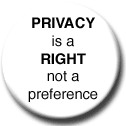Instant Credit = Instant Identity Theft
The New York Times reports in depth on the methods used by criminals to engage in identity theft. The thieves sorted through recycling bins, finding personal information left by accounting firms and other companies that discarded personal information without shredding it. They also stole mail, pulling identifiers out of bills sent to individuals' homes. But they also ordered credit reports on potential victims, because in doing so, they could determine which victims had access to instant credit:
''I would know what I'm dealing with before I'd invest time in the person's Social Security number,'' (Kari Melton) went on to say. Part of that decision depended on whether the prospective victim owned a home. A typical homeowner can get an instant credit line of $5,000 to $25,000. Melton told me: ''If you have the credit to get a home loan, you have the credit I need.''
"If the victim passed this test, Melton or Massey would begin applying for credit cards using one of the many online credit-card sites that give automated responses to requests for credit. One site, which is now defunct, ''let people apply online and get an instant answer within 30 seconds,'' Melton explained. ''I would have $1,000 available to me instantly'' -- along with the promise of a credit card.
The article continues and discusses the problems posed by insiders at financial services companies, and the failings of the Gramm-Leach-Bliley Act to properly protect personal information.
Dumpster-Diving for Your Identity
New York Times, December 21, 2003.






